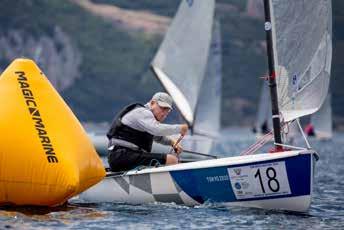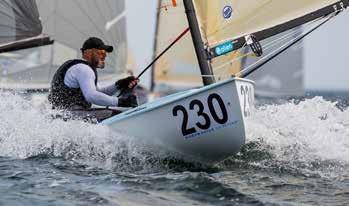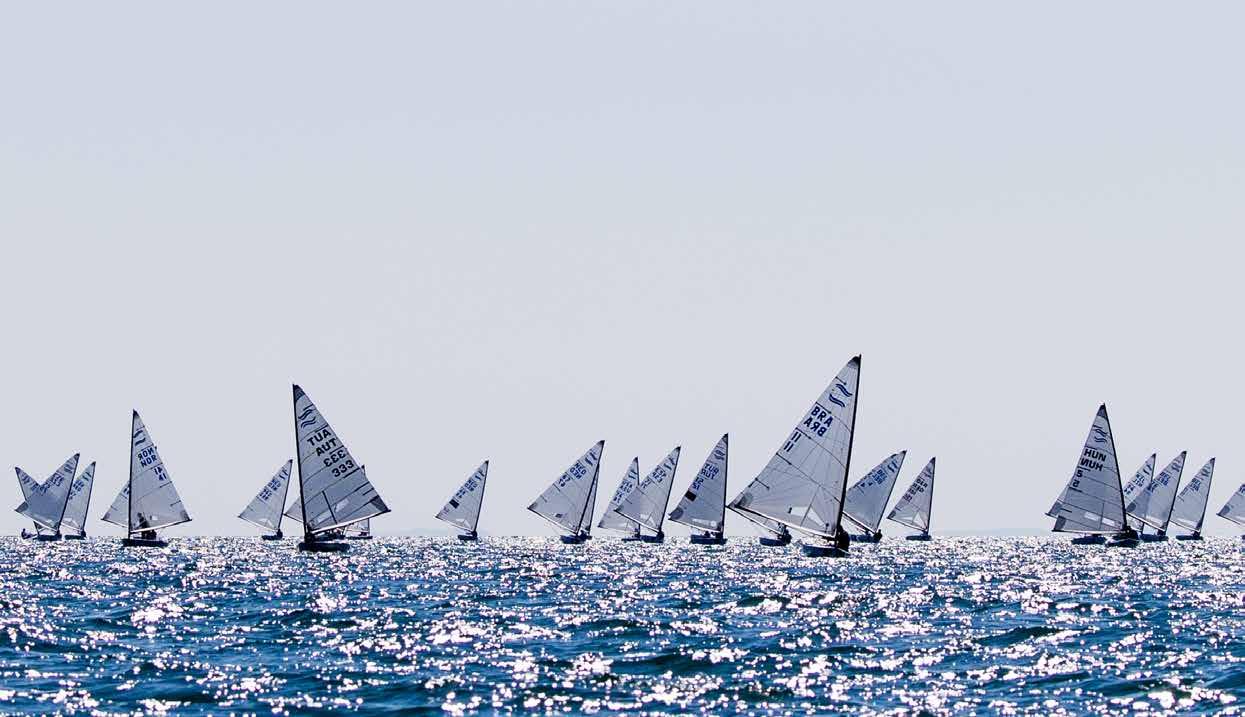
FINN
75 YEARS 1949-2024

APRIL 2024
• Laurent Hay Interview
• 75 Years of the Finn
• FINNTALKS - What they said
• Over the Horizon
The official magazine of the International Finn Class




75 YEARS 1949-2024

• Laurent Hay Interview
• 75 Years of the Finn
• FINNTALKS - What they said
• Over the Horizon
The official magazine of the International Finn Class


Dear Finn sailors,
This year we are celebrating 75 years of the Finn.
These anniversaries seem to creep up on us with frightening regularity and mark the passing years. However, it’s worth reflecting on where the class finds itself at this point in time, and conjecture where it is going, backed up by the work of the current Executive to keep the class relevant and interesting to its members.
Many celebrations will take place this year to commemorate three quarters of a century of Finn sailing. However, for the first time in the history of the class, we will mark a major anniversary without it being an Olympic class. But there is still much to celebrate. The number of Finns sailors in the class has grown in the last three years and events are still attracting big and increasing entries. There are more than 300 sailors entered for this year’s Finn World Masters in Punta Ala, with around 100 expected for the Finn Gold Cup in Aarhus and perhaps 150-200 for the Europeans in Cannes. All signs of a very healthy class and this is also reflected in many of IFA’s member countries with large entries for championships and major events.
The Executive has tried hard to provide a championship calendar that not only provides competition through the season, but also in all the various corners of the Finn sailing world to enable as many as possible to experience the events. After 2021, finding venues was somewhat hard, with perhaps a lack of confidence caused by both the pandemic and the loss of Olympic status, but it is very encouraging that this confidence has returned, and we are once again getting many more offers than we can reasonably accept, so much so that the Masters rules were changed to allow bidding up to three years out.
We currently have enough potential interest and bids for our major events to fill virtually every slot up to 2030. That is great news for the future of the class, and there are some new, and very interesting, venues being discussed. The events for 2025 are
already fixed and by August this year we should have all events for 2026 scheduled. Hopefully there will be more details available for many of these bids at the AGM.
These events provide the backbone for the World Tour for Finns, which feeds the World Ranking List. Judging by the feedback and correspondence we receive it is encouraging how many are engaging with this to monitor their performance against their fellow sailors and sailors from across the world. It is also exciting that more than 1,300 Finn sailors are included. The big question though, is there a sailor out there who will overtake Laurent Hay, who has led the World Rankings since it was started.
Historically the Masters events were run separately from the IFA major championships, and much of the administration and finance was kept separate. It created two different areas of class management. This is gradually evolving to merge parts of these two sides of the class together to improve efficiency and cost effectiveness and this process has begun with closer financial links and a ‘merger’ of the websites. This has been underway over the European winter, promoted by the necessity of a major upgrade of everything under the hood.
It has taken longer than expected but should provide a more seamless experience as well as providing significant cost and labour savings. The next step is event documentation and streamlining rules for events. However, I believe it is vital that we respect the traditions and history of the Finn Masters events, while also making them harmonised with the other activities of the IFA, rather than an independent process. It’s a slow process but will hopefully reap benefits.
Enjoy the year of celebration and enjoy your Finn sailing. There is much to look forward to this year and in the coming years.
Robert Deaves IFA Executive Director
Sets of back issues of FINNFARE dating back to the late 1990s are available in the Finn Shop. In total there are about 60 editions available, totalling more than 1500 pages. SET 1 covers all available issues from 1997 to 2009. SET 2 covers all issues from 2010 to 2019. There are at least 20 complete sets of all 30 issues. In addition, some sets of the Masters Magazine are available. It includes all copies from 2015 to 2020 (6 editions). See finnclass.org/shop


The following venues and dates are now confirmed.
2024 Finn World Masters, Puntala, ITA, 7-14 June, www.finnworldmaster.com
2024 Finn Gold Cup/Silver Cup, Aarhus, DEN, 31 August-7 September, 2024.finngoldcup.org
2024 Open, U23 and Masters Europeans, Cannes, FRA 19-26 October, 2024.finneuropeans.org
2025 Open, U23 and Masters Europeans, Naples, ITA, 5-13 April
2025 Finn World Masters, Medemblik, NED, 13-20 June, www.finnworldmaster.com
2025 Finn Gold Cup, Cascais, POR, 31 August to 7 September
2026 Finn Gold Cup, Brisbane, AUS, February
2026 Finn World Masters, Brisbane, AUS, February (after FGC), www.finnworldmaster.com
To bid for future events please contact the IFA Office.
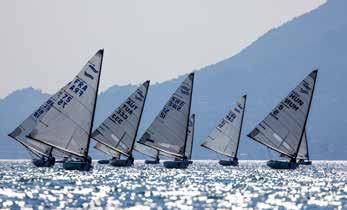
Most of the photos in this issue and from the major events can be obtained as prints or downloads from: http://robertdeaves.smugmug.com
President of Honour
Gerardo Seeliger ESP
Mob: +34 609 20 10 20
Email: gerardo.seeliger@gmail.com
President
Rob McMillan AUS
Mob: +61 405 177 207
Email: finnports@live.com.au
Vice-President – Development
Marc Allain des Beauvais FRA
Tel: +33 (0)2 85 520 350
Fax: +33 (0)2 85 520 348
Email: marc@transmer.com
Vice-President – Sailing
Kristian Sjöberg FIN
Mob: +44 7901 851580
Email: kristian.h.sjoberg@gmail.com
Vice-President – Masters’ Fleet
Andy Denison GBR
Tel: +44 (0)1202 484748; +44 (0)7802 355 522
Email: andy@denisons.com
Hon Treasurer
David Bull AUS
Tel: +61 411 071 833
davidannb@icloud.com
Chairman Technical Committee
Tim Tavinor GBR
Tel: +44 7590 043459
Email: timtavinor@gmail.com
Special Projects
Andrzej Romanowski POL
Mob: +48 501 371 281
Email: andrzej.romanowski@buildingenergy.info
Chief Measurer
Andre Blasse AUS
Tel: +61 438 347 398
Email: finnmeasurer@gmail.com
IFA Office (Executive Director, FINNFARE Editor, webmaster)
Robert Deaves
2 Exeter Road, Ipswich
IP3 8JL, England
WhatsApp/Mob: +44 7936 356663
Email: robert@finnclass.org
Skype: robert.deaves
IFA website: finnclass.org
Gold Cup: YEAR.finngoldcup.org
Europeans: YEAR.finneuropeans.org
Silver Cup: YEAR.finnsilvercup.org
Finnshop: finnclass.org/shop
Finn Masters: finnworldmasters.com
YouTube: finnclass.org/finn-tv
Twitter: Finn_Class
Facebook: Finn-Class
Facebook Group: https://www.facebook. com/groups/848887039847759/
Instagram: finnclass
Next issue: November 2024
Online issues: issuu.com/finn-class
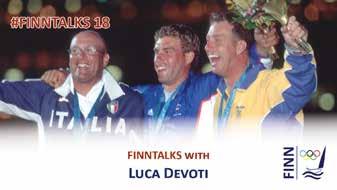
Every month there is a new #Finntalks on the Finn Class YouTube channel. If you want to talk Finns, please get in touch. https://finnclass.org/finn-tv/finntalks
Cover photo: Laurent Hay and fleet at 2023 Masters Europeans in Campione (Photos: Robert Deaves)
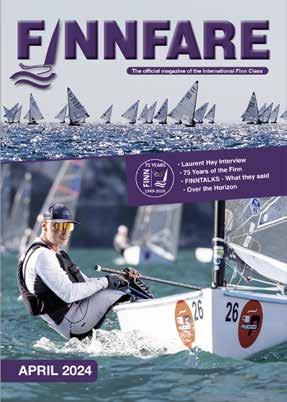








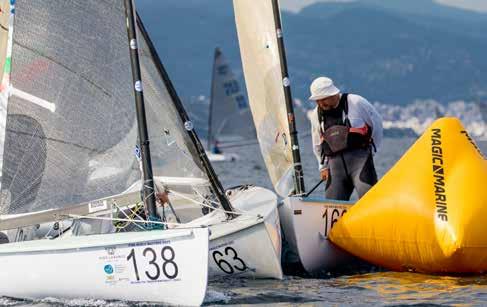



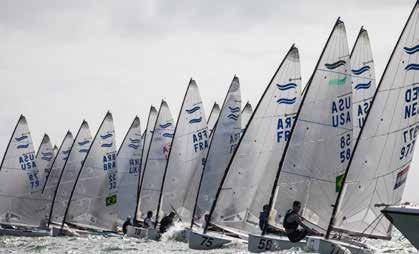
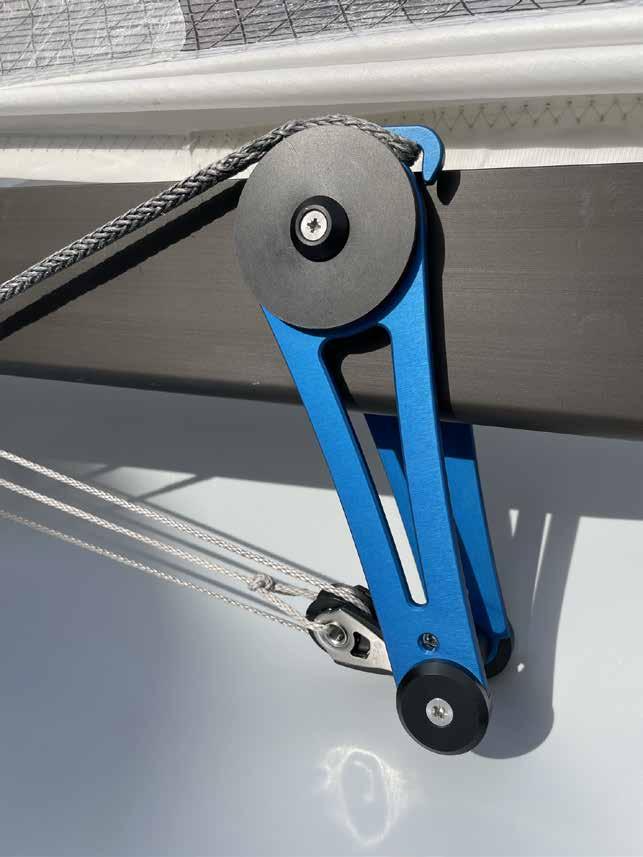


The IFA is once again working in partnership with Finn World Charter to provide discounted equipment for the Finn Silver Cup, being held as part of the Finn Gold Cup in Aarhus from 31 August to 7 September. Up to five Finns are available for a much reduced charter fee of €1000 net, including transport, less than half the normal price.
IFA is very keen to encourage National Finn associations to identify and send young sailors to the Silver Cup, matching the great initiative in Australia that selects and funds U23s to attend the championship. For more information or to secure a place in Aarhus, please contact Finn World Charter on +34 606 267 777 or at finnworldcharter@gmail.com
2023 masters magazIne

Don't forget to check out the 2023 Finn Masters Magazine. Contains interviews with Jay Harrison and Peter Mosny as well as in depth reports from championships and local Masters events as well as a look ahead to what is on the way, plus all the usual Masters information. The next Finn Masters Magazine will be published after the 2024 Finn World Masters in Puntala. See issuu.com/finn-class
The 2024 IFA AGM will take place at 10.00 on 2 September at the Aarhus International Sailing Center, during the Finn Gold Cup.
In line with the IFA Constitution, and to allow time to prepare papers, all submissions should be with the IFA Office by 8 July to allow the agenda to be published in good time.

The 2024 Finn North American Championship will be held at Sail Newport on beautiful Narragansett Bay, Rhode Island, USA from Wednesday, October 2 thru Sunday, October 6th, 2024. The primary goals of this regatta are to have a fun, safe event that is competitive for modern Finn racers and Classic Finn sailors who are interested in attending a major sailing regatta. Significant efforts are being made to welcome female and younger sailors who have not experienced Finn sailing. There will be loaner boats available for this regatta. Joe Cooper, aka Coop, will have discussions/coaching after each day’s racing to improve everyone’s racing and sailing skills. The US Class want this regatta to be a learning experience for everyone including those who may not have experienced performance solo sailing in both Classic and Modern Finns.
They are working with Newport’s Sailors for the Sea to make this regatta as sustainable as possible by adopting their best practices. This regatta has earned their platinum level regatta status – their highest level.
In addition to conducting a great regatta, there will be a 75th anniversary celebration of the Finn class on Saturday evening at Sail Newport. Finn Legend Gus Miller is coordinating this 75th Anniversary celebration which will entail having Finn pioneers discuss their experiences and how the class has evolved in the last 75 years. There will also be a presentation on the Finn Class’s future.
Regatta information is on the Sail Newport website, https://sailnewport.org, USA Finn Association website, http://www.finnusa.org/, and the Classic Finn Organization website, www.classicfinns.org. The regatta chair, Dave Hemenway, may be reached at davidahemenway@gmail.com.

Please be aware there are a LOT of fake Facebook groups looking like official Finn Class pages. Most are spam sites and impersonate championships. The only two 'official' versions are the Page above (https://www. facebook.com/InternationalFinnClass) and the Group right (https://www. facebook.com/groups/848887039847759). There are several other groups that are
legitimate but not managed by IFA (though it has some moderation control).
Many of the fake pages attract hundreds of Finn sailors as followers. Most of these sites are full of spam posts, including fake live event feeds. So please be careful and check out who owns the group or page before sharing or adding content. And please do follow the official Finn Class page and group.

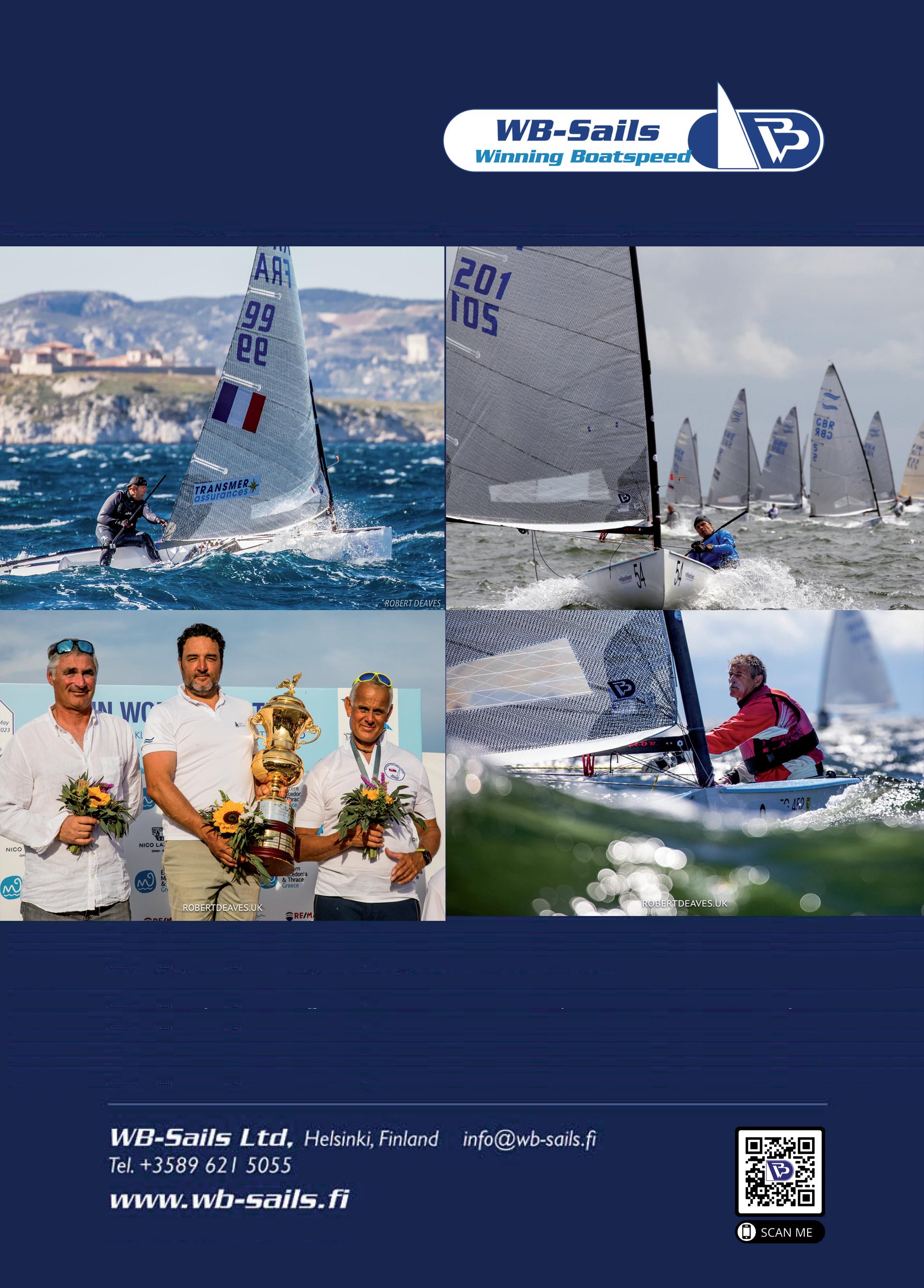




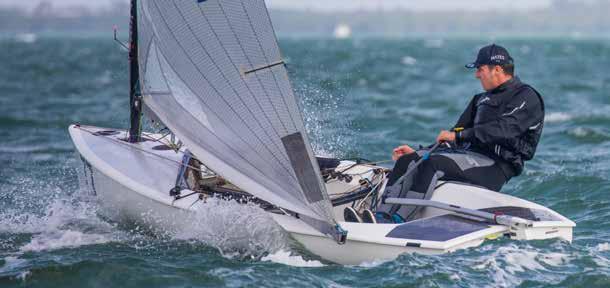
Where did it start for you? When did you first step into the Finn and when did you realise that this was a boat and a class like no other in your club boat park? As tens of thousands of people have realised over the years it meant something to say you were a Finn sailor, to both meet the physical and mental challenge of sailing the boat well but also joining a worldwide community of like-minded enthusiasts. That all still holds true to this day, despite the new reality for the class.
To mark the 75th anniversary of the Finn Class in a meaningful way it would be easy to write another history of the class, but this would just largely repeat what is in multiple books. FINNLOG in 1984, Finnatics in 1999 and Photo FINNish in 2009 cover the majority of the widely recognised history of the class up to that point, so there is no real need to repeat any of that. [Just buy the books – finnclass.org/shop.]
Within the sport of sailing the Finn class is often quoted and widely regarded as the ultimate challenge. It was created from the hand of Swedish canoe designer Rickard Sarby in Uppsala in 1949 as his entry in a design competition to select a new monotype dinghy for the 1952 Olympics Games in Helsinki, Finland. Until its removal, the Finn was the oldest dinghy clas s used in the Olympic Games, but also one of the most modern. From its inauspicious beginnings it evolved into a modern thoroughbred and created a long and rich history, a proud heritage, a deep legacy and longstanding traditions. The class has created more sailing heroes than any other class. There are many legendary stories as well, but more on that later. The Finn was designed as an Olympic singlehander that could
be sailed worldwide and aspiring Olympic sailors could practice and develop the required skills prior to the Games. The Finn engendered intense devotion to the class and competition by many sailors throughout the world, demonstrating its suitability as a true Olympic Class.
Over the course of 75 years the Finn was present in 18 Olympic Games, and there have been 67 Finn Gold Cups and European Championships, and 52 Finn World Masters. The boat has been sailed in perhaps more than 70 countries, and more than 20,000 have been built.

More than numbers it is the boat, the ultimate challenge it represents, the events, and the people that keeps everyone coming back for more or returning to the class after a period sailing something else or after time out from sailing.
And that is what has kept the class successful over these 75 years. For some the Olympic challenge was the driver, for others it was competing alongside those who would compete at the Olympics, but for the vast majority it was the boat and the people.


Back in the day the motto was always “The Finn is the Ultimate Challenge”, all geared around the essence of Olympic competition embodied in the motto: Citius, Altius, Fortius...
This oft repeated blurb went along the lines of “The nature of the competition must provide the ultimate challenge to be a true test. In the sport of sailing the Finn is such a challenge.” Is this still true today? And how do we keep it so?
Happy and rewarding sailing is all about finding the right level of competition, challenge, sailing conditions and much of that is venue dependent.
The old blurb also stated, “The journey is the reward. The Finn experience is an exhilarating personal journey shared by all sailors in the class. It offers each individual sailor the opportunity to develop from a good national competitor into a true member of the international sailing family.”
And “The Finn’s challenge is timeless . . .The fruits of such a journey cannot be bought... they can only be earned through long hours of hard work, courage, perseverance and the realisation that the reward is not in the winning but in performing at the best of your ability. These are the values that stay with the athlete for the rest of his life.”
How do we relate this to the position the class finds itself in post-Olympics? Well, the boat has not changed even if the competition is perhaps not as fierce at the top that it used to be.
In terms of boats being sailed and attendance at major events, there has barely been a noticeable blip since the loss of Olympic status. The pandemic had a great impact of course, but now numbers at events are returning to pre-pandemic levels and overall membership numbers in the class are higher than before 2020.
Former Finn sailor and well-known British yachting writer, Jack Knights once wrote, “The cult of the International Finn Monotype may seem strange to some people, uncomfortable, masochistically so to others. But to us devotees, there is nothing else remotely like it. The Finn probably offers the most purely athletic form of yacht
racing and is, therefore, the most fundamentally competitive. The Finn gives thrills, frustration and pleasure in roughly equal measure. It offers the rewarding opportunity of doing a difficult thing well. There are lightnings and such for the rest, but there will always be those who aspire to be master of a Finn.”
Perhaps it is the unswerving desire to do something quite difficult, but to do it well, that drives many sailing the Finn, whether they want to win the Finn Gold Cup or just a club race. Mastery of the Finn is an admirable, but difficult challenge, and it’s not always against the boat or the other sailors, but also against yourself.
Gus Miller wrote: “This boat is so sophisticated and subtle that no one can ever master it and when you are racing, it is not against the other guys so much as against yourself. If you can master the boat as well as you can, then you will do well. If you are having trouble, it has nothing to do with the other guys, but the other guys will help you. Because the guys work together and push each other so hard, the level goes very high. The guys are interested in pushing each other up.”
The Finn remains the ultimate challenge for many because they know the boat still represents the same extreme physical challenge to sail well, it offers pathways to excel, to become fit and strong enough to manage the boat, to develop mental discipline and to communicate with other sailors going through the same process. Whatever else happens, the sailors emerging from this process become, stronger, more confident and better sailors. They become Finn sailors, renowned and famous worldwide.
We end at the beginning with a tongue in cheek analysis of Finn sailing from the designer of the Finn, Rickard Sarby. He wrote this over 50 years ago, so it is of its time, but everyone who has sailed a Finn will relate to most of it.
“What is Finn Dinghy sailing? Racing with light centreboard dinghies is perhaps the most multifaceted of sports. A light breeze sailing, in wind strengths from 1.5 m/s down to zero, only makes the uninitiated spectator wonder how sailors can engage in something so slow and uneventful and call it racing. The contestants, who fight to win such a sailing, do sit quietly in the dinghies but do not have a single second of boredom. Any unnecessary body movement is not only unnecessary, but it also slows you down. But the brains spin at high speed, follow the actions of the competitors, analyse the signs of nature, and try to sort out the actions that are likely to lead to success. The slightest change in the situation requires new considerations and new decisions. The maximum time for a sailing is usually 3 1/2 hours. Only a few can maintain concentration for such a long time. Mental strength can make the difference. After such a race, the helmsman is a physically and psychologically badly broken being.
“We double the wind strength to 3 m/s and enter the next phase. The sailor sits upright on deck and sometimes must do something to keep the dinghy sailing upright. The viewer gets a livelier picture - of aimlessly spread dinghies, sometimes kilometres apart. Not even an experienced sailor can reliably assess their relative positions from the outside, other than when the dinghies

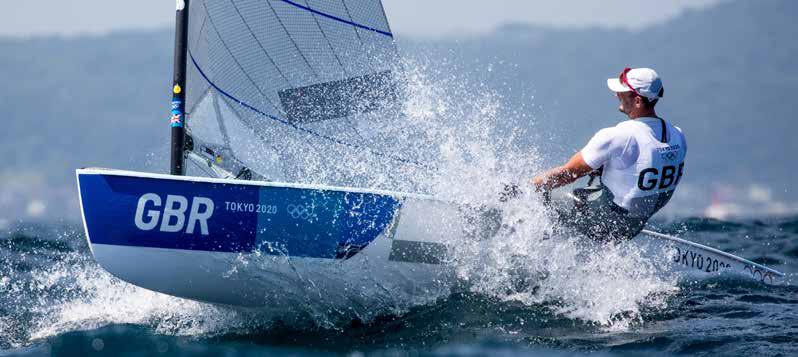
round some mark. The competitors, on the other hand, know very well how the situation is in relation to fellow competitors, hundreds of meters away. In that wind strength everyone sails almost equally fast, it is easy to sail, easy to move in different directions. Now the competition is like a battle in chess, where each competitor plays simultaneously against all the others. It's not just about sailing fast - it's about constantly conquering favourable positions and blocking the opponents from acquiring good positions. Now racing is largely a matter of tactics, based on the special and hard-to-learn turning rules. Whoever can best devise and implement a tactical plan will win.
“We double the wind strength again, to 6 m/sec, and find ourselves in the middle of the next phase. The spectator is amused. All the helmsmen seem to be falling overboard and can't seem to get back on board. What he sees is the ordinary life of the Finn sailor. Since the dinghy has no keel, something else must counteract the wind pressure in the sail and keep the dinghy upright. That, too, will be the helmsman's job. Footholds inside, i.e., hanging straps, give him the opportunity to mostly hang outside his boat. Tactical skill and concentration alone are no longer enough for success. Now also requires strength in all muscles and endurance.

“We take a bold leap to 12 m/sec, to the dramatic part with scary moments and capsizes. The normal human reaction - the reluctance to fall into water - makes the spectator's eyes widen at the sight of some magnificent somersault. It has even happened that sensitive onlookers have called the police, to rule out the race. The contestants have a great time -more or less - and collect deeply etched memories for the rest of their lives. The technique is now "to survive", i.e., not to capsize, it is a question of a physical performance, paired with coolness and responsiveness.
“Low-wind days at the beginning or end of the season can be difficult, but when it's windy enough for the helmsman to exert himself, the water is diluted with sweat - regardless of the season. The wind god sometimes wonders if the sailor is really exerting himself to the limit and tries with a small extra puff, which blows the dinghy over to leeward. Sometimes the sailor manages to stay on the hull and can quickly raise the boat again. Often, he is thrown into the water on the leeward side of the dinghy. It's racing, it's in a hurry, it's about getting up nimbly.
“A few words should also be said about the pleasant fairways where you sail downwind. Possibly pleasant to 8 m/s! Then downwind with the wind right astern the wind becomes a treacherous opponent. Sailing in strong winds is the same grind as on the beat, except that the dinghy is now wobbly and must be
balanced with constant body and rudder movements. At sufficient speed, the dinghy starts planning over the water. The dinghy sails along and over the waves in clouds of foam and gives the sailor a peculiar feeling of escape. Speed may not be much to brag about in the space age. At best 15 knots, about 28 km/h. But the trip over the constantly changing surface, the uncertainty of rarely seeing anything through the foam, the proximity to the water and the cold spray, gives an amazing speed experience.
“When the dinghy flies forward the fastest, the capsize is closest. The contrast between the beautiful, controlled flight of the planning, and the chaos of a capsize gives a shock that you never seem to get used to. That capsize usually happens so that the mast lays against the wind. At the same time, the helmsman is thrown away in the same direction. The seconds are critical just then. The wind pressure is now against the deck of the dinghy, the sail has no tendency to sink, and the dinghy fills with water very slowly. After only a few moments, the dinghy is about to drift away with the wind. The helmsman, in rubber boots, sweaters and rain gear, is not a fast swimmer. There will be some desperate swims to reach the dinghy. Many have failed miserably. Familiarity with the water, swimming skills and a life jacket give the sailor complete safety, but it is so embarrassing to splash around on the lake fully clothed without a boat.
“Why do so many devote themselves for so long to this troublesome life? What has been said actually gives a distorted picture of the whole subject. The memory stops too easily at dramatic situations that occupy a vanishingly small part of the time sailing. The episodes stand mostly as a colourful psychological background. Everyone must experience them to be fully captivated by Finn Dinghy sailing.”
The history of the class is littered with stories. Many have been told and published, but many more have not. The IFA archive is full of unpublished stories, some disreputable, some historic, and some just pain funny. A new book is planned to bring all these stories to life, a ‘new’ history of the class through the mouths of the sailors. If after reading this you feel like contributing to the ongoing story of the class, the best way is to go Finn sailing and make your own stories. The second-best way would be to send your story to the IFA office for publication in the new book – a definitive story of the Finn.

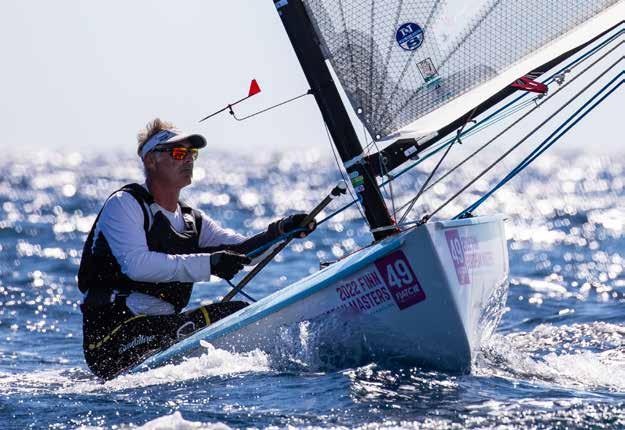

an interview with world no. 1 laurent hay
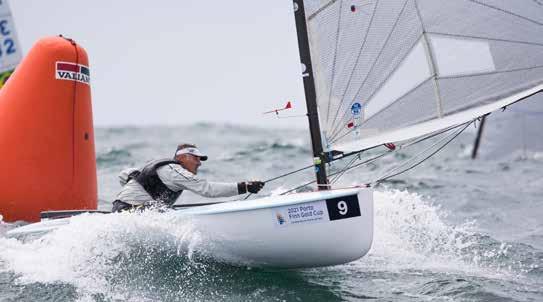

Laurent Hay’s exploits on the water need no introduction. As the World Ranked No 1 for the last two years – actually since the IFA World Ranking List was created – he has attended all the major events and been on the podium in all but one of them.
He has won the Grand Masters title at the Finn World Masters four times, was runner up at the 2023 Finn Gold Cup and Europeans, and won many other events and French titles.

Introduced to the Finn one day in 2005 he bought a boat the very next day and became enamoured with Finn sailing, the people and the events.
He started his sailing career in the Optimist at eight years old in a boat built by his father. He remembers “friends, weekends on lakes in the Paris region.” Then followed “a victory in a world team tournament in 1978, and my first ‘Marseillaise’.”
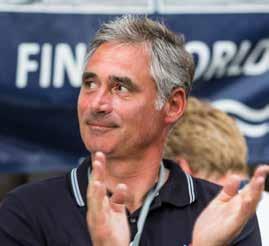
In his teen years he sailed in a 420, “teammate of a charming young girl and a title of French U17 Champion and German Champion. Still in the 420, a crew of two friends with a Rochelais helmsman. And despite only summer sailing due to preparation for the Grandes Ecoles d’Ingénieur (engineering school), I got some good results: twice French Champion, European Champion and Vice-World Champion.”
This success inevitably led towards an Olympic campaign for Seoul in the 470 from 1986-1988. “In the end we finished third in the French selections…and first for staying in front of my television as a supporter of the French Olympic Champions. My Olympic experience ended there. It was not in my DNA to depend on a Federation. And above all my vertebrae said, ‘Thank you.’”
Over the next 20 years he focused on intense professional activities, family, and his three sons.
He sailed regattas at the weekend on River Seine, was French champion in the Star, sailed the Soling and won two 505 French Championships.
“And the Laser. Every Saturday afternoon with my group of friends, we were around 30 Lasers on a small lake near Paris. All were former great champions in windsurfing or 470.
We always used black flag for all starts…it was an autonomous organisation, each taking a turn in charge of the race committee.”
After a busy professional life, he has recently devoted time to developing sailing and working with sailing organisations on a voluntary basis. “In my professional life, I have taken over, created and sold companies in different areas of industrial or service activity, but never organised a merger.
“Then, for four years, after the sale of my last company, I have devoted myself to voluntary activity as President of an association. With a motivated team, we brought together the two largest historic sailing clubs in La Rochelle to create La Rochelle Nautique.
“I also founded an offshore racing training centre for skippers (www.centre-excellence-voile. com). And after four years as President of the Pôle France Olympique La Rochelle, I remain administrator of this French Olympic preparation centre, and I actively monitor the development of our talents of tomorrow.
“This voluntary commitment is a way of giving back to my sport everything it has given me in my life.”
“A friend, Pascal Têtard - GGM World Champion in 2012 – lent me his boat for a club regatta on the Seine in Paris at the end of 2005. The very next day, I ordered a Finn from Suntouched Sailboats. We subsequently spent thousands of km on the road discussing tuning, tension and mm of movement, to understand how to adapt the equipment to our physiques and our racing style. Fortunately, Claire, drowning in the middle of sailing bags in the back of the car, had headphones and a good playlist...”
“Regardless of the interest of the boat, it was the level of the Finn class that appealed to me, a constantly improving international Master level, and at the time an Olympic circuit open to ‘old’ tourists.”
For Laurent the Finn class represents, “Conviviality and sporting and friendly exchange. It’s an extraordinary chance to meet and share with sailors from all over the world. Meeting up from year to year allows us to maintain connections and gives rise to frank hugs, which does not exclude great battles and tough fights on the water.”
The Finn Sailing Academy in Vilamoura, run by current World Masters champion, Filipe Silva, has been attracting more and more sailors over the winter months, Laurent included.
“The training camp that Filipe Silva created is an important

contribution to the development of Finn. Offering the opportunity to train with varied groups, quality coaching and in a spirit of sharing technical and human experiences, it is a real opportunity and above all a great pleasure. We always learn something in a good mood.”
He says that local groups of sailors are good levers for developing wider activity and fostering class growth. “In La Rochelle, we are five boats (Michou, Stephane, Valerian and Don Xavier), sailing together regularly and organising our travels. That creates a real attractive effect.”
In October 2022 IFA launched a World Ranking List based on a World Tour for Finns, a circuit of 50+ events worldwide. Laurent Hay was the first World No. 1 and has stayed in that position in all five releases so far.
“I discovered the ranking list existed the day it was first published. I don't know the exact calculation methods for each test, so I don’t have any particular strategies. On the other hand, because I appreciate important events (level and fleet size), I travel willingly, and this type of ranking offers a significant bonus for participation.
“The title of World No. 1 perhaps reflects a certain form of regularity and commitment, but not necessarily sporting leadership because I am neither European Open Champion nor the winner of a Gold Cup. However, for my personal press officer, :-) it is a real communication lever.”
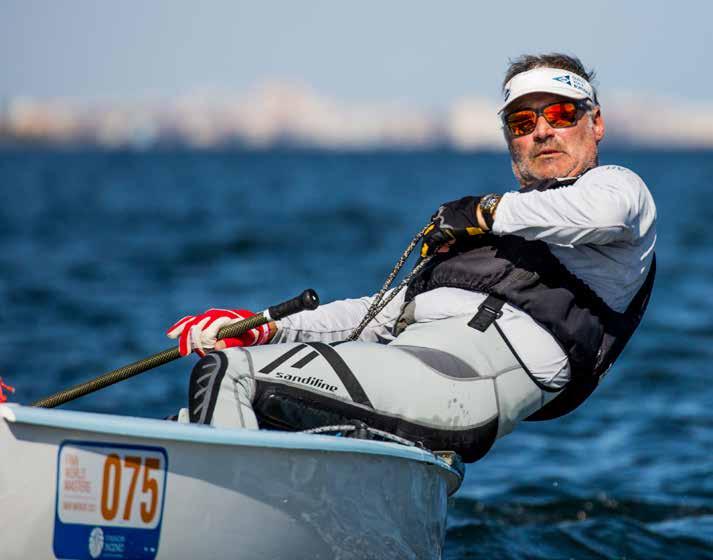
“As soon as I finish a competition, I think about the next one, it’s a real addiction. I like the contact regatta, confronting myself with something stronger than me. So, I am delighted when young or former Olympic athletes come to play with us. They show me the path to progress, and it’s a great motivation.”
Goals? “Of course, winning a big one is a nice goal. I actually missed the top step several times for alphabetical reasons RET- BFD-UFD.”
In terms of equipment Laurent has recently been using a TT2 Finn, as well as his old Devoti. “I have two boats now, my old Fantastica and a new TT2. Now I have time, so it is very interesting to try something else, to test and manage different ways of sailing in Finn. It’s good for the class to have several builders.”
Having attended all major events in recent years, he has strong opinions on what is working and what can be added

to make the calendar more accessible and interesting.
In terms of the class running the Finn Gold Cup and World Masters as separate two world championships, “I think the two events must coexist.
The World Masters is a magnificent event where conviviality is the key word.
Through its organisation (racing rules, classification by age), it represents one of the largest gatherings in dinghy sailing and allows all our grey hairs to sail together. The Gold Cup has a more competitive approach, allowing the integration of young people, seniors or ex-Olympians. This sporting aspiration also helps to Masters to develop, and they regularly attend training camps.”
“For the European Championship, the Open grouping is a good solution. You just need to have an intelligent distribution of dates between the Gold Cup and the European Championship.”
“The choice of venues, its attractiveness for accompanying persons, its logistical capacities and reception are essential ingredients for the development of the class. Since the Finn is no longer an Olympic class, even the seniors are aware of these prerequisites. Today's Finnists are no longer professionals and only come to compete for their pleasure.”
However, “We must facilitate the organisation of friendly clinics, with educational coaches.
We are also trying this strategy locally in France, and people seem satisfied. It is important that all may progress in their practice by benefiting from sound advice.”
“In my opinion, there is a hole in the European calendar for a regular international event in April in the sun (for example Palamos, Palma or Garda. To end the season in the sun, we could also organise a regatta over 3-4 days with around 30 participants (according to the former Star Sailor’s League model) to include youth, ex-Olympics and Masters, etc.
“It is obviously appropriate to study the logistical and financial model of this event using the Masters Academy, especially if a clinic is first organised on site for around 15 master sailors. It would be a great focus for live relaying on social networks.”

He reveals his fondest memory of Finn sailing was the World Masters in Barbados in 2017, which certainly fulfilled the need for an attractive location. “A real recreation, full of wind, waves and friendships, a breath of sunshine in a very complicated professional period. Once the worry of seeing the boats arrived safely in the containers was over, we enjoyed an exceptional setting and welcome. The club, the hotel and the nearby beach generated extraordinary moments of sailing and festive conviviality.”
“I remember a unique moment in Cannes in 2008, the year of the Olympic Games, during international week. There were more than 70 boats and some big names from the Olympics, notably the Italian and French, including Guillaume Florent who would become the bronze medalist in Beijing.
“During a light weather race in the eastern bay, Didier Poissant, 85 years old, in fragile health, French representative at the 1956 Olympic Games in Melbourne in Finn, rounded the first mark in the lead after a very tricky first leg. All the Finnists present in a spontaneous gesture stood up in their boat, applauded and chanted his name for several tens of seconds. It was a vibrant tribute full of emotion which suspended the regatta. Then the race started again. It’s this Finn spirit that makes this class so special.”
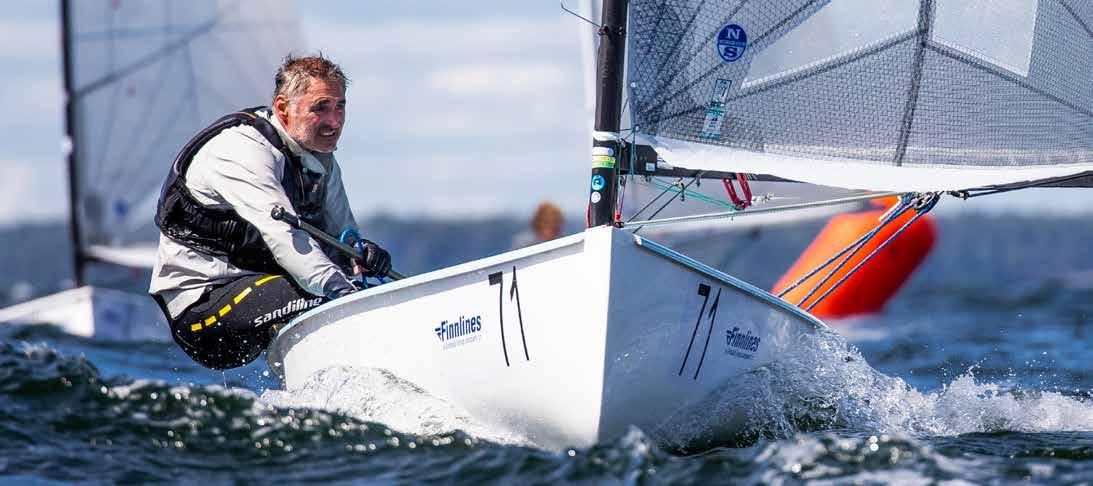
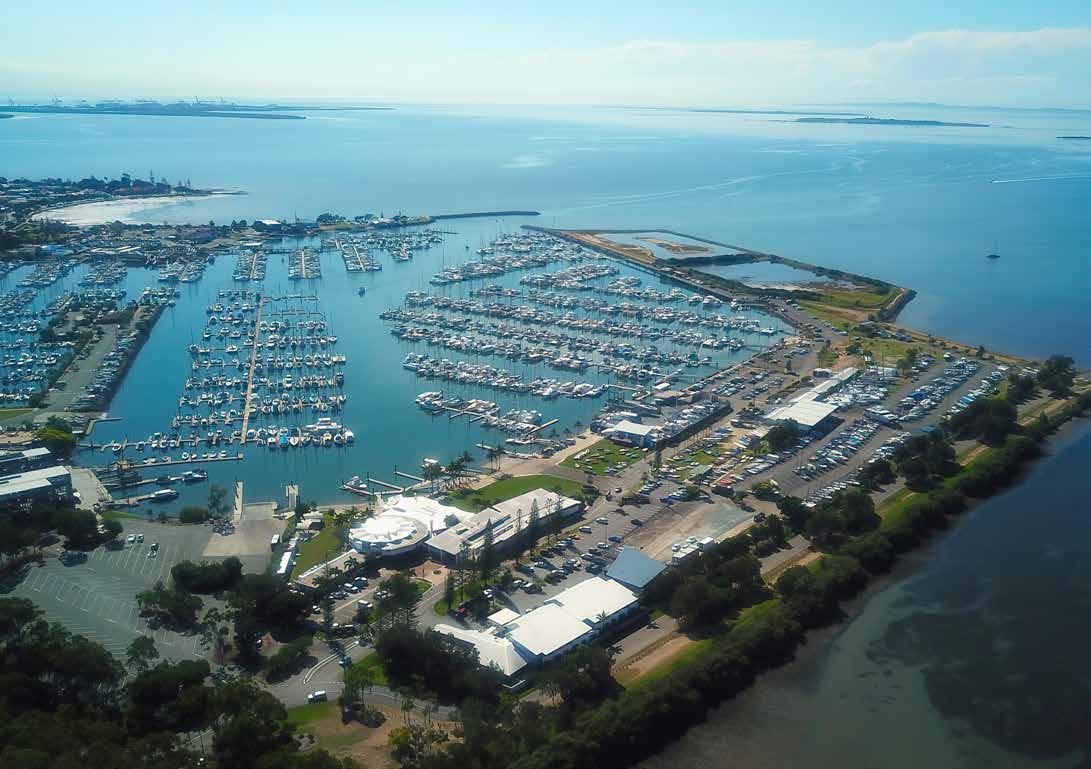


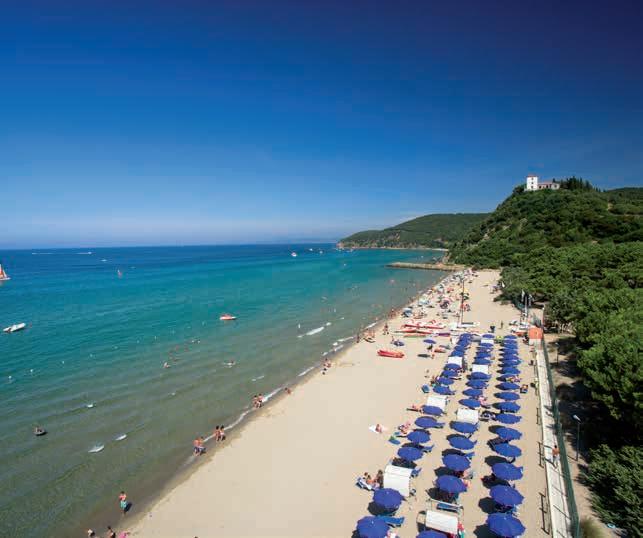
a look ahead at some of the amazing venues the class is heading to in the coming years

The first major championship of the year will be the Finn World Masters at Puntala, Italy, from 7-14 June. By the early entry deadline there were 314 entries, clearly marking a return to prepandemic numbers and a great encouragement to the organisers. It is being organised again by the Centro Velico Punta Ala at the beautiful PuntAla Camping Resort, a 27-hectare camping site and holiday park located in a pine forest adjacent to an unfeasibly beautiful and long beach. During the summer months there is a regular afternoon thermal breeze, which makes sailing pleasant and fun.
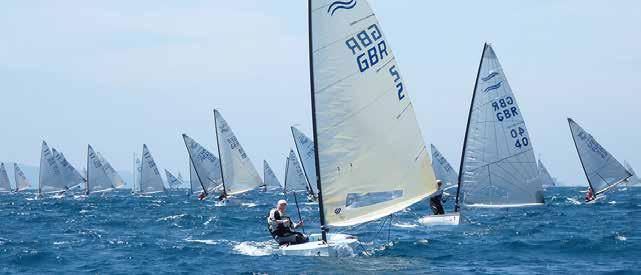
The 2024 Finn Gold Cup (and the Finn Silver Cup) will be held in Aarhus, Denmark, from 31 August to 7 September. Hosted by Sailing Aarhus it will be sailed out of the Aarhus International Sailing Centre. The event coincides with the Aarhus Festival, one of the largest cultural events in Scandinavia, showcasing local, national and international artists. For 10 days the city becomes vibrant with entertainment, art, gastronomy and music.
The enthusiastic and growing Danish fleet are fully behind the event, which is expected to act as a catalyst for growth regionally and attract a large number of Finn sailors from neighbouring countries such as Finland, Sweden and Norway. With more than 70 entries so far it is looking like being a great boost for the Scandinavian fleets.
There will be camper van space at the marina by the club, but there is also a lot of accommodation nearby. The event will be included on the programme for the Aarhus Festival, so it will be an amazing week being a part of that.
The Finn Gold Cup will be preceded by the Danish Championship from 23-25 August, hosted by Egå Sejlklub a few km to the north of Aarhus, and sailed on the same waters, so offers a great opportunity for some practice ahead of the world championship. The boats can be left there for the following days before the Gold Cup starts, if needed. Links on the Danish class website here: www.danskfinnjolle.dk.
More details are published on the event website 2024. finngoldcup.org.
The 2021 Finn World Masters should have been in Punta Ala, Italy, ten years after it was last held there. It is remembered as one of the best venues the Masters has ever visited. Unfortunately, due to the pandemic, the organisers felt that they would not have been able to commit in 2022, and they were fully booked with events in 2023, so the Masters Committee offered it for 2024.
Much is already in place. With 300+ entries the racing will be on two course areas in four groups. The beach will be set up with rubber matting for each launch and recovery. It is all set to be an amazing regatta and a return to the big numbers of old.

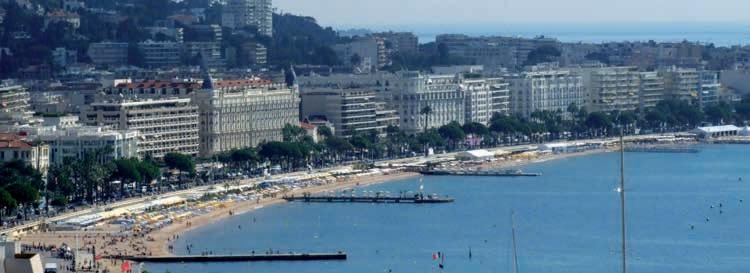
The 2024 Open, U23 and Masters Europeans will head to the Yacht Club de Cannes, 20 years after the same club hosted the Finn World Masters. Today there are 25 Finns based at the YC de Cannes where many regattas are organised throughout the year, including the International Finn Week, held since 2003.
Located at the Pointe Croisette, the Yacht Club de Cannes is in one of the most attractive Mediterranean destinations, with spectacular beaches in addition to the Vieux Port and Le Suquet, which bring a picturesque supplement to the area.
There is a huge range of accommodation in Cannes, from upmarket hotels to budget conscious apartments. Everyone can find accommodation that suits them according to budget, with most bookable online.
In 2004, the Yacht Club De Cannes was the host of the Finn World Masters with 192 competitors.
Entry is open and more details at 2024.finneuropeans.org

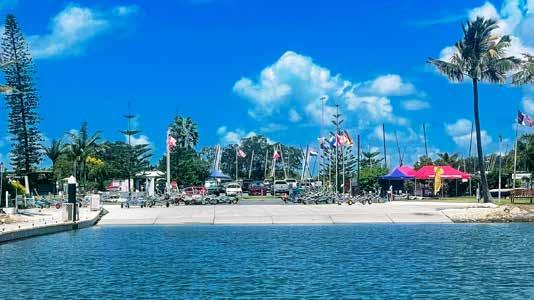


In 2026 both the Finn Gold Cup and Finn Word Masters will be in Brisbane, Australia. There is a report on finnworldmaster.com following a recent visit. The intended dates span early to late February with the Australian Nationals as a warm up before the Finn Gold Cup and finally the Finn World Masters.
The Royal Queensland Yacht Squadron is one of the largest sailing facilities in Australia. It is located within Manly Marina, to the south of Brisbane. The scope of the club is huge and spans most of the shoreline around the massive marina.
The local Finn sailors – about 30 in the club – are on top of this to create a superb event on and off the water. They have great influence in the club and the area and a lot of work has already taken place.
As a prime destination, Brisbane offers a lot of tourism opportunities before and after the regattas. Downtown Brisbane is 20 minutes away with the northern beaches slightly further. The Gold Coast is an hour to the south. Island trips are very popular using local ferries, and there are many activities available including wineries, walking tours, dolphin trips and river cruises.
More information coming soon.


Looking ahead to 2025, the Open Europeans will be held in Naples, Italy, from 5-13 April. It will be hosted by Circolo Nautico della Vela, one of the oldest and most prominent yacht clubs in Italy.
The 2025 Finn World Masters will return to Medemblik, in The Netherlands. Twice the Dutch had to cancel events because of Covid, so we hope this is third time lucky. The organisation is already well underway and we can be sure the Dutch will make it a top-class event on and off the water. They are already planning for 300-400 boats. Further details will be published during the year.
Then in September the Finn Gold Cup returns to Cascais in Portugal for the third time after previous visits in 1970 and 2007. The dates have been set for 31 August to 7 September and this comes on the back of rapid growth of the class in Portugal in recent years.
Further ahead, there are many bids and expressions of interest from clubs worldwide to run Finn class events. A few of these will be voted on the AGM in Aarhus.
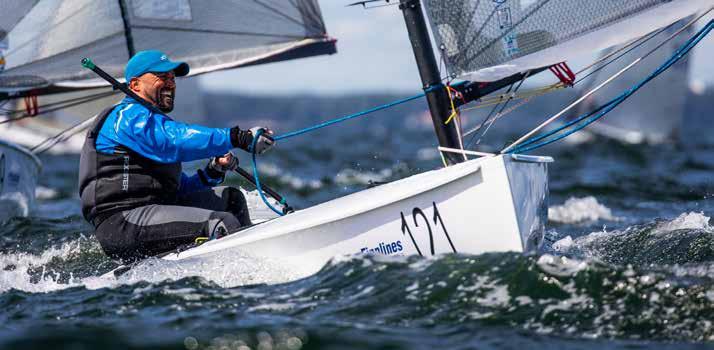
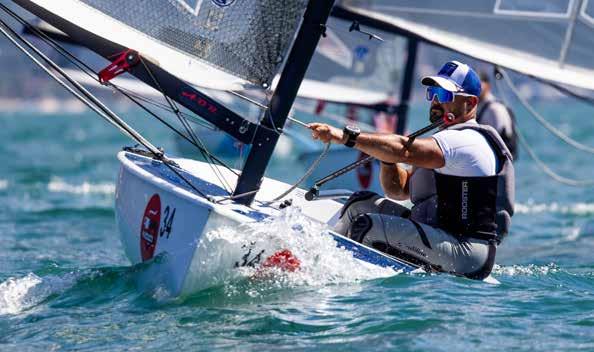
STRENGTH IS NOT FOR SHOW, IT KEEPS YOU SAILING FOR LONGER
The Finn class is the most physically and mentally demanding singlehander in the world and requires extreme levels of fitness, muscular development and athletic ability, especially since the class rules allow unlimited boat rocking and sail pumping offwind when the wind is above 10 knots.
The second most important part of a Finn sailor’s performance is efficient hiking to maintain good boat speed. A better sailing performance is partially determined by a lower rate of neuromuscular fatigue during hiking. Hard but sustainable hiking, including getting the legs and buttocks outside of the deck, gives you about 15 per cent more righting moment compared to relaxed sailor. Based on this, a 185 lb sailor who is hiking hard could achieve as much righting moment as a relaxed 220 lb sailor.
Physical fitness covers a wide territory. If you want to improve your sailing performance through better fitness, spend your time on the aspects of fitness that count most. A study of sailing fitness measured competitive dinghy sailor fitness levels and correlated them to the sailors’ regatta performance. Here are the top three fitness measures that correlated with success on the race course.

tomas mihalik, svk 271, looks at specific skill related training techniques for the finn with some suggested programmes
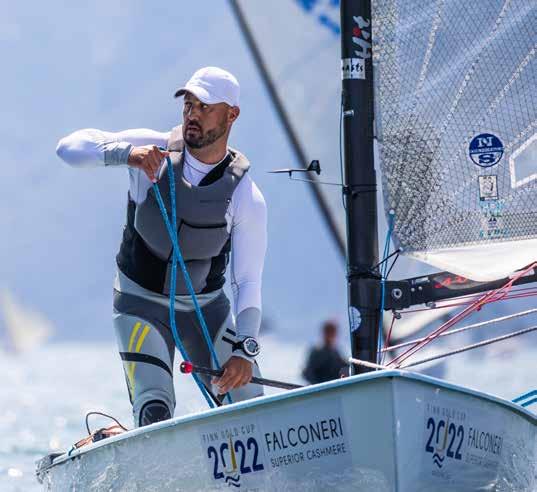
Hiking endurance – correlated 82 per cent with regatta performance. In most small boats, you need to hike hard for a long period of time to keep the boat level for maximum speed. A related measure (knee extension strength) also correlated highly (60 per cent).
Sheeting power – correlated 77 per cent with regatta performance. Your mainsheet is your accelerator and it needs to be adjusted frequently and sheeted hard in a breeze. A related measure (grip strength) also correlated high (77 per cent).
Core strength – correlated 46 per cent with regatta performance. Abdominal muscle strength and endurance.
The stronger we are, the relatively easier hiking and pulling the sheet becomes and we can be more focused on tactics during the race. If we do not have a good strength base, then we will struggle even if we are well conditioned. A good strength base is also so important to stay away from injury or pain for a variety of reasons. Stronger muscles and tendons help hold the body in proper alignment and protect the bones and joints when moving or under impact.
Studies have reported that the most common areas of injury whilst sailing small boats are in the back (45 per cent), knees (30 per cent), shoulders (20 per cent).
Injuries can be due to:
• Inadequate physical fitness,
• Acute trauma,
• Overuse injuries./
Just remember, which joint and muscles do you feel after a tough day on the water? Hiking and pulling the sheet involves several major muscle groups. Shin muscles, quadriceps, hip flexors, spinae erectors, abdominals, back, forearms and biceps are heavily involved.
One of the interesting things about sailing is that these muscles are used in a lot of different ways. For example, sometimes your movements are static, like hiking or holding the mainsheet in place. At other times your movements are explosive or repetitive, like when you are roll tacking or sheet-vanging. Thus, how your workout is structured should depend on the demands placed on you by the style you sail.
Strength training should be developed with structural balance in mind for achieving your specific goals on the water. In the European Journal of Applied Physiology, leg extension strength and quadriceps isometric strength was shown as the most important factor for hiking fitness.
Core strength refers to the muscular ability to stabilise the spine through contractile forces and intra-abdominal pressure, actively controlling spine stability through co-activation of the trunk muscles. Functional strength exercises provide power improvement in a way that is very specific to the required technique, involving the same type of muscular contraction used in the skill execution while exercising and developing strength and flexibility for the actual skill.
There are a few important factors to consider other than core and legs when setting up your programme. First of all, engaging in a lot of exercises where you utilize PUSHING movements (e.g. bench press) will do very little for you in a sport where you typically PULL things in and ease them out.
When you do focus on your upper body, it is important to remember that almost every movement you do in a sailboat is using a significant amount of core strength. Thus, finding upper body exercises that heavily engage your core simultaneously will better prepare you for the water than those that do not. Furthermore, compound
"exercises where you utilize pushing movements will do very little for you in a sport where you typically pull things in and ease them out"




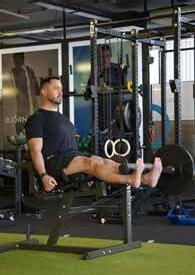
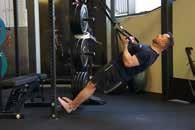
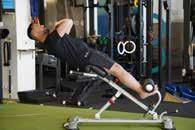
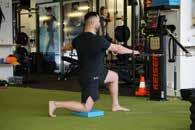
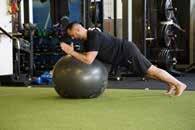
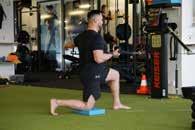
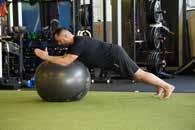
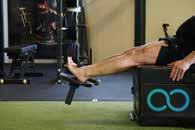

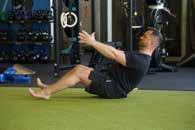






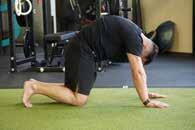






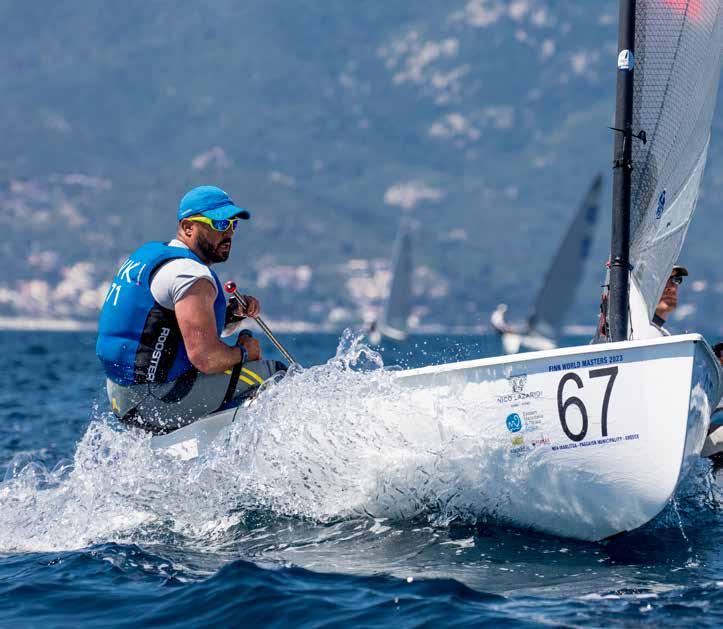
movements will also have a greater impact on your fitness because they will hit both large and small muscle groups at the same time. For example, pull ups engage your back, biceps, and core all at once, just like sheet-vanging.
In conclusion, it is very important to remember that strength training has more than just performance benefits for Finn sailing, it is a holistic approach to enhancing your health span and extending one’s overall lifespan. Strength training positively impacts muscle and bone health, body composition, metabolism, heart health, cognition, lifespan, and more. While you may have a genetic propensity to age-related muscle weakness or low bone mineral density, lifestyle habits like resistance training can mediate that risk. Including strength-based exercises in your regimen, even a couple times a week, can be a pivotal step towards a healthier, longer life with better quality.
• Spine - Hip mobility and core exercises routine before or after sailing make your body feel great
• Make training specific to your goals and weak areas
• Overload your muscles to gain strength. Initially, use heavier weights and fewer reps until you can no longer lift. After building strength, you can increase reps for endurance.
• Compound movements will have a greater impact on your fitness. For example, pull ups engage your back, biceps, and core all at once.
• Quads, core and pull exercises are most important. Train them together as training example.
3x (1 set - A1 / A2 / A3 / rest 1.5 min)
3x (1 set - B1 / B2 / B3 / rest 1.5 min)
3x (1 set - C1 / C2 / C3 / rest 1.5 min)
• To prevent injuries, use good posture and work in exercises to balance muscle groups.
• Periodically change your routine to give the muscles completely new exercises and loads.
• Anaerobic interval training - Air bike or rowing ergometer is great for improving endurance for free pumping. 10 x 30s ON/ OFF or 10 x 500m with 1 min rest.



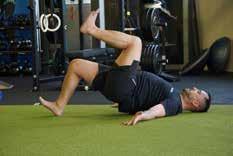


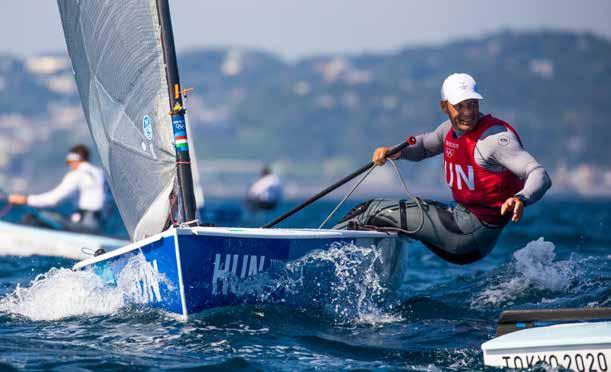
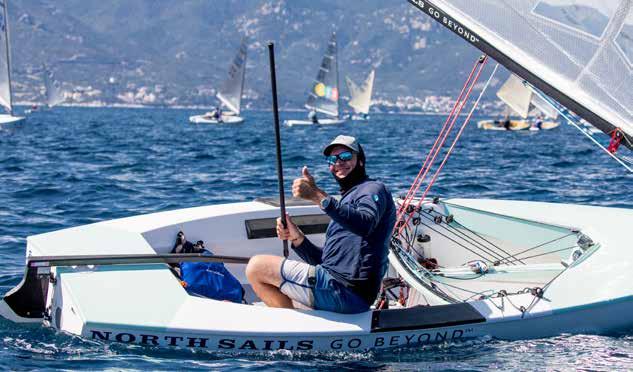
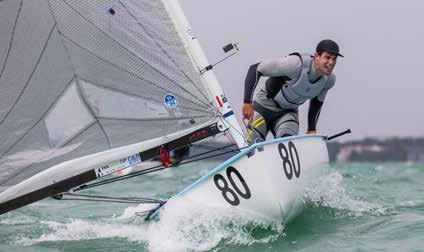

In the world of sailing, few classes hold the same level of appeal and tradition as the Finn Class. With its long history, strong performance and stories of friendship and competition, the Finn has won over sailors worldwide. But what makes this singlehanded dinghy so special, drawing sailors in and keeping them hooked?
The Finn Class has a rich history dating back to its founding in 1949 by Rickard Sarby, specifically for the Helsinki Olympics in 1952. It’s a singular story we all know so well, and over 2024, we’ll be celebrating
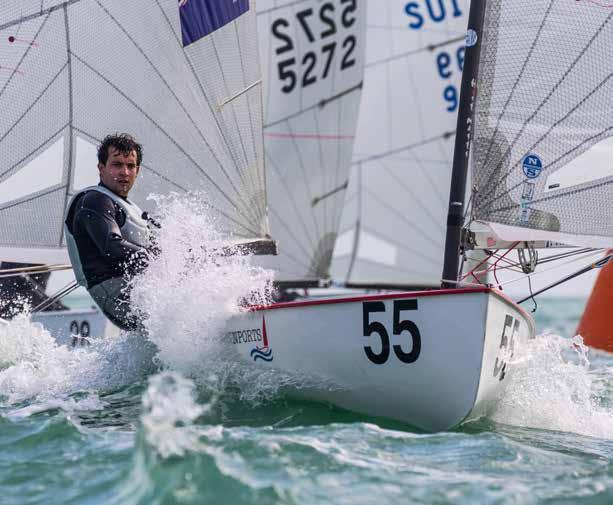
francesca frazza looks back at some of the guests on the finntalks over the past 18 months
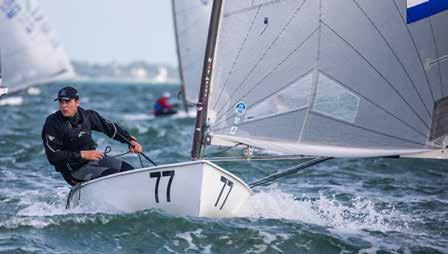
our 75th trip around the sun. Back in 1949, Finland was getting ready to host the 1952 Olympic Games, and the Finnish Yachting Association was trying to find a single handed boat fit for the Olympics.
Thing is, Scandinavia wasn’t overflowing with dinghy classes. The Finns handed over the technical details to the Swedes, which supposedly had more knowledge in designing small boats. A Committee of five people put together a description of what the future Olympic class should be, and the competition deadline was set for May 15, 1949. Here’s where Rickard Sarby stepped up and made history. The prototype was launched the first week of May 1949, weighing in at 150 kgs, and believe it or not, prototypes were still sailing strong in 1971.
Since then, it has become synonymous with excellence and endurance in sailing. Sailors from all sides, from Olympic champions to casual enthusiasts, have been drawn to the class for its unique challenges and sense of community.
Over the past year we’ve started a new format, the ‘Finntalks’. Finntalks, originating as a series of podcast and video interviews centered around the Finn Class, represents a vibrant platform for everybody. These talks revolve around sailors’ careers, their enduring love for the class, sailing techniques, and insights into the Finn calendar, among other captivating topics. With a blend of personal anecdotes, professional insights, and expert analysis, it serves as an engaging hub for the diverse voices within the Finn sailing community and here’s some of our favourite quotes.
For Hungary’s Zsombor Berecz, winning a silver medal at the Tokyo Olympics was the realisation of a lifelong dream. He reflects, "I've dreamt of standing on the Olympic podium since I started sailing, so you can imagine what it meant to me." Now, as he mentors youth sailors in Hungary, Berecz sees sailing, and the Finn class in particular, as a way to shape not just athletes, but good people.
Christopher Burger, an Olympian and president of the Swiss

Finn Class, shares a similar sentiment. He highlights the fun and challenges that come with Finn sailing, saying, "In my club we have 30-40 active Finn sailors and what got me into Finn sailing was seeing how active my club and my dad were. I started Finn sailing in 1996, after the Barcelona Olympics. After the Laser, the Finn felt very comfortable and I got hooked straightaway. The Finn delivers a whole package, you have fun and there are challenges that are coming with it, so after starting there was no way back, and I am very happy about my choice." With a thriving community of Finn sailors in his club, Burger appreciates the enduring appeal of the class.
For Luca Devoti, Sydney silver medallist and owner of Devoti Sailing, the Finn Class represents personal growth and triumph. “I was a basketball player, my father got cancer and I thought to myself ‘what am I going to do with my life’ and the only thing I really liked was to go sailing, so around my 20s I went to my grandad’s house on Garda and I started sailing. After two years of Lasers I went to an event with 100+ Finns, that Luc Cholet was winning and I just got captured and there it goes, Finn forever.” Despite facing setbacks, including a serious back injury, Devoti's passion for the Finn has never faded. Now, as he continues to contribute to the class, Devoti is committed to making Finn sailing accessible to all.
Beyond the individual stories of success and resilience, the Finn Class embodies a vibrant community rooted in tradition and friendship. With its impressive performance and timeless allure, the Finn attracts sailors from diverse backgrounds till this day.
Within the class, there are also promising young sailors, such as Hungarian Domonkos Nemeth, our Vice-World and European champion. Reflecting on his journey, he shares, "I was a pretty big kid, I didn't have many choices and I started sailing the Finn when I was 15. The boat is made for me, it's perfect for my height, weight, abilities, and technique, and the people are super welcoming. The community feels like a family; the people are always nice."
In the Finntalks, we also explored ways to engage younger sailors in the class. During our conversation, we discussed this topic with Sjoerd Hofland, a skilled 23-year-old Dutch sailor, “I started sailing the Finn in 2018. I’ve been thinking a lot on how to involve young sailors, given the fact that I am the only one sailing in The Netherlands. We’ve got some other guys sailing, which are a little older than me, but like I said, I am the only junior. I’ve been helped a lot and the reality is that there’s a lot of people out there willing to help you. Just get the chance to sail on a Finn, you’ll get the help you’ll need and once you start sailing, you will never look back.”
Testimony to what was said by Sjoerd is the experience of James Golden, a young American sailor, who until a few weeks ago
All Finntalks so far are available on the Finn Class Youtube channel and through FINN TV on https://www.finnclass.org/ finn-tv/finntalks
Peter Sangmeister, USA
Zsombor Berecz, HUN
Miguel Fernandez Vasco, ESP
James Lyne, GBR
Sjoerd Hofland, NED
Ross Hamilton, IRL
Marko Kolic, ITA
Domonkos Nemeth, HUN
Anthony Nossiter, AUS
Phil Chadwick, AUS
Jens Kristian Andersen, DEN
Simon Percival, GBR
James Golden, USA
Christoph Burger, SUI
Cristiano Ruschmann, BRA
Cameron Tweedle, GBR
Rob McMillan, AUS
Luca Devoti, ITA
was engaged in the American trials for the Olympics. Since the last Finn Gold Cup was held in Miami, James decided to join our fleet and ‘leave’ the Laser for a week, to then take part in the Finn Silver Cup, organised in Gravedona in July, where he took home the U23 World title: “For me it’s about getting on the water and learning new trades of the sport and so the Finn has given me another sort of knowledge. There is a huge difference between sailing the Finn, in between hiking a little bit and going full on, there are huge differences in your speed, it’s all physical, all preparation and that’s the beauty of the boat. There’s other things obviously, the way the boat is built, it’s a better thought out boat, especially compared to some others, the way that the mast is free-standing, you can change the tip of the mast, the mast bend, the way that the Finn sails with the water is just amazing.”
As the Finn Class enters its eighth decade, the class remains on a high note, continuing to thrive, building on its legacy and inspiring other sailors around the world to challenge themselves.
Much more than just a sailing class, it's a way of life. From its humble beginnings to its status as a global phenomenon, the Finn has captured the hearts of many for generations and will continue to do so.
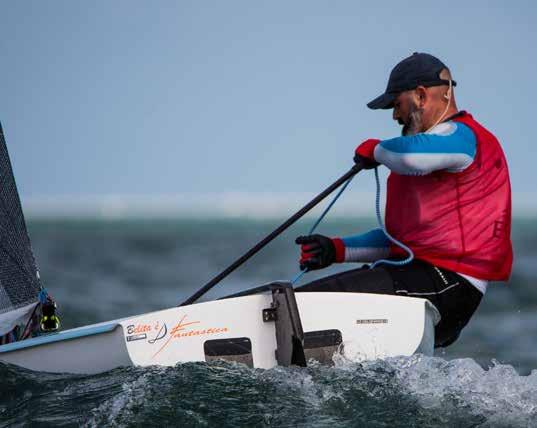
We are always looking for more individuals to take part in future Finntalks. You don’t have to be a Finn Gold Cup winner, just enthusiastic about the class and the people, or have a lot of old stories to tell. If you are interested, please contact Francesca on francesca.frazza@gmail.com.
Phil Chadwick writes: From the get-go it was a battle of the Titans with Rafa Trujillo the 7-time Olympian (4 as athlete and 3 as coach), Silver medalist and past world champion, and Rob McMillan, multiple National champion and 40 years Finn sailing, in line for a battle royal.
Day 1 brought blue skies and a steady breeze made for champagne sailing. In Race 1 Rafa started at the boat and Rob using his signature move, the pin. Rafa was OCS by a small margin and to be fair struggled to cross the line in fifth. Rob pressed hard left and came out ahead in what was a super steady breeze with only minor oscillations. Rob extended all the way and impressive with a solid win from Marcus Whitley and Bucky Smith.
The south-westerly was fading slightly for Race 2 and in a congested boat end start Rafa made his move with everybody now pressing hard left. Rafa held onto first with Rob close behind to Marcus Whitley, who has shown he is a contender and is super quick using his spare mast which is super stiff sideways.
There was a 12 knot southerly on the overcast second day with pressure drops below 10 knots and lots of shifts. Fortune favoured the brave and the ones who picked a side and stuck to it did best. Many tried the middle but would lose out to both sides in the end. Rafa had a day out with 1, 1 and Rob slipped a bit with 3, 4. Marcus was the mover with 2, 2 to take the overall lead.
The sunshine returned on Day 3, and a real work out for Race Management, course boats, rescue boats, jury boats and yes…sailors too. Shifty winds, and boats pushing the line, caused multiple start sequence’ playing out, with the ‘black flag’



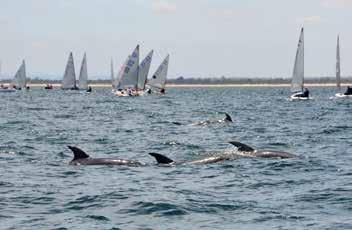
becoming the flavour of the day. Race 5 was wacky racing with a 10-12 SW with big shifts of up to 40 degrees building to a solid 15-20 knots SW for race 6, with many struggled to get through the gybes and several capsized and few needed assistance. Rob had the best day with 1, 1 whilst Rafa had 3, 3 and Marcus 8, 2. It was super tight at the top.
The final day started in a nice 6 knot easterly with pressure bands and shifts coming from both sides. Again, the middle was death. Four boats received a black flag but the leaders were away clean. Again, Rob McMillan came out clear ahead from the left side with Rafa and Larry Kleist a good way back. Rob must have lead by a minute at one stage but was run down on the final run when the pressure died and Rafa and Larry carried a ghost of a breeze down. Several gybes and counter gybes in the final minute gave the win to Rafa from Rob and then Larry just a few seconds adrift. The points were now all tied up with Rafa ahead on count back to Rob. Some were thinking it was over but then a lovely 8 knot easterly popped up and held nicely for the final race.
In the deciding race, Rafa started at the boat and raced right. Rob at the pin and raced left. The right paid at the halfway mark and Rafa pushed left to cover Rob, just in case it went back. Bucky Smith, James Bevis and a few others continued right and found another 20 degree shift to the right which effectively

killed off anybody in the left including Rob. Rob did well to come back to 13th as he was way deep at the top mark. Rafa sailed brilliantly to pass at least 10 boats to finish third in race 8 and take the Championship.
The U23 National Champion is Jack Eickmeyer from Pat Cummin, Hayden Barney and Sam Ede. These young men stood out as future superstars of our sport and should be congratulated. Jack will represent Australia at the 2024 Danish Nationals and the Gold & Silver Cup in Aarhus, Denmark. The U23 Australian Champion is supported by IFAA with Airfares, Boat charter, accommodation and entry into the Silver Cup.
Master: 1 Rafael Trujillo, 2 Bucky Smith, 3 James Bevis; Grand Master: 1 Rob McMillan, 2 David Ellis, 3 Petter Fjeld; Grand Grand Master: 1 Larry Kleist, 2 John Condie Andrew Coutts; Legend: 1Jay Harrison, 2 Nev Wild, 3 Bob Buchanan
Cristiano Ruschmann (BRA 108) writes: From 12-14 October the Brazilian Southeast Finn Championship took place in Ilhabela, the same idyllic venue of the 1988 Finn Gold Cup. Sailors from all active fleets in Brazil (Brasília, São Paulo and Rio de Janeiro) attended and enjoyed great sailing conditions, as well as a very friendly atmosphere complemented with after racing cold beer.
The sun unfortunately did not shine, but the wind was above 18 knots every single day from south and east. Last race was sailed under heavy 25 knots, with big waves providing great downwind surfing conditions.
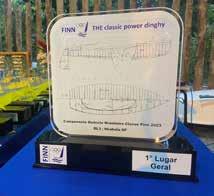
Antonio Moreira (BRA 114), the defending Brazilian Champion, repeated an outstanding
The 2023 Chilean National Championship was held at Lago Villarrica in Pucón from 28-30 December. Matias Poncell took the win with four race wins from Antonio Poncell, who won three races. The other race was won by Ike Gaete. 17 boats took part.
performance by winning all five races, followed by Robert Rittscher (BRA 11), the presently best placed Brazilian sailor in the Finn world ranking, who consistently crossed in second place in all races of the series.
Pedro Lodovici (BRA 32), the most enthusiastic Finn sailor of Ilhabela and top 10 in the last Finn Gold Cup, could sadly not participate due to an unexpected injury while practicing some days before the event.
Finally, one could not fail to mention the amazing sailing commitment of the Brazilian legend Carlos Aviz (BRA 149), who, after putting his helmet on, unconditionally mastered all heavy air and sea conditions of Ilhabela.
1 BRA 114 Antonio Moreira 4
2 BRA 11
Robert Rittscher 8
3 BRA 108 Cristiano Ruschmann 12
4 BRA 17
Leonardo Fabiano Seger 17
5 BRA 5 Paulo Fróes de Oliveira 17
6 ARG 100
7 BRA 149
8 BRA 57
Rogerio Queiroz Guilger 23
Carlos Alberto d Miranda Aviz 25
Adrian Meusburger 29
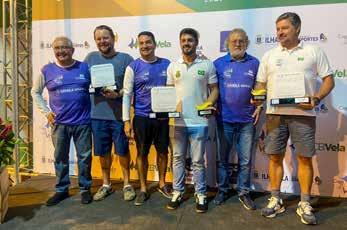
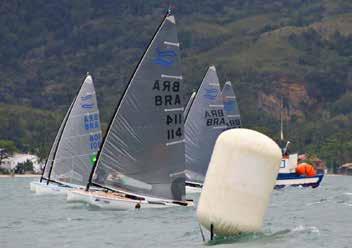

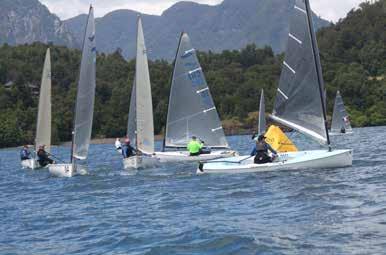


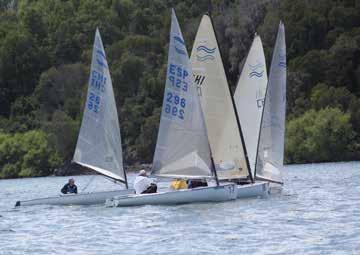

The 2024 Semaine Internationale de Cannes attracted 63 entries from 11 nations for a week of generally light wind racing with Laurent Hay and Valérian Lebrun fighting it out for the top spot.
On the first day only one race was sailed in 12-13 knots swing with Lebrun winning from Hay and Peter Peet. Three races followed on day 2 in a 7-9 knots breeze. After a mixed bag – with wins from Hay, Xavier Penas and David Terol –Hay took a narrow lead, from Lebrun and Bas de Waal. After more light winds on the third day Hay managed to keep his place from Lebrun and Dominique Wächli. Race wins went to Rudolf Baumann and Axel Rimmele.

Andreas Bollongino writes: The ‘lengthy’ German winter is progressively shortening each year, with winter training sessions now being offered in almost all our five subregions, and participation steadily increasing.
Primarily, January and December remain relatively devoid of sailing activities, affording us time to focus on our nearly 80-page thick printed Class magazine, the ‘Finnwelle’.
The Finnwelle is distributed to our members at the beginning of March, containing the regatta plan for 2024, along with reports from major events, interviews, and a section I am particularly proud of: the introduction of new class members through a light-hearted
Lebrun won the only race on the final day, again in a very light and unstable wind, but a second place from Hay was enough to retain the title for another year. Hay only won one race but was consistent enough to win from Lebrun with Spain’s Ruben Serra Merckens coming out as best of the rest in third.
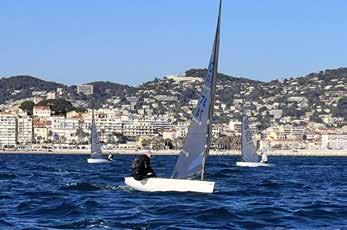
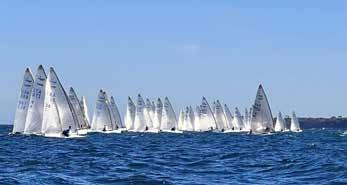

questionnaire (not to be taken too seriously) accompanied by photos of the newcomers. As usual, it was not feasible to include a photo of every new member in the magazine. However, this year, we dedicated eight pages to newcomers, representing approximately half of the 30 (! Thirty!) new members we acquired last year. In terms of quantity, this continues the growth trend of the previous year; in terms of quality, we are steadily progressing towards our goal of lowering the entry age of our members.
The growth of the class is primarily attributed to our highly active regional representatives, who warmly welcome prospects and actively integrate them into the Finn community. They are aided by our newly designed website, which focuses more on new members than on regular information for existing members. We still need to finetune some aspects, but it appears we are on the right track. The success of this endeavour is evident not only in the growing activity within the class but also in the increased involvement of Finn sailors and clubs in events, training sessions, communication, and knowledge sharing within the class.
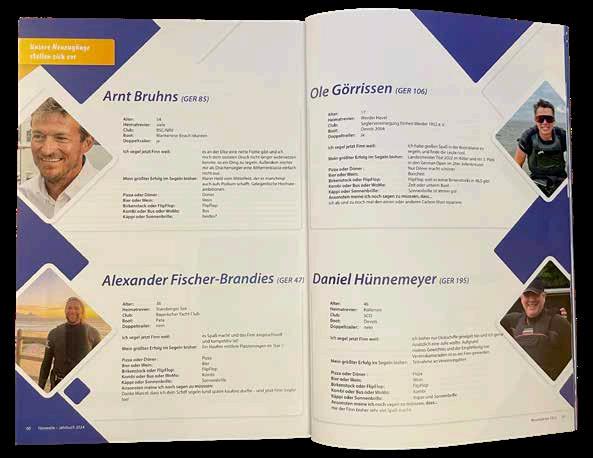
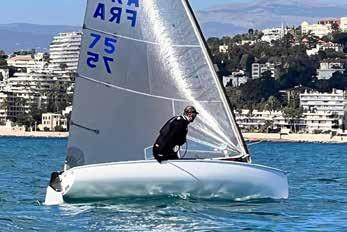
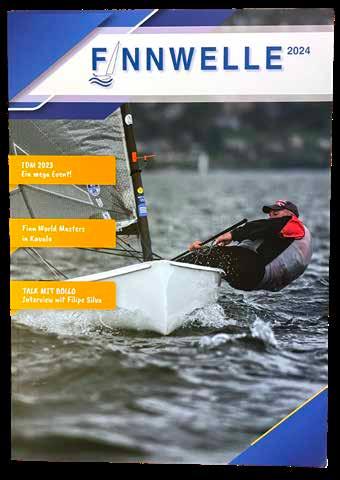
A prime example of this will be the International German Championship this year in Hamburg (27-31 August). Set against a unique backdrop, the engagement and preparation of club members for this event have already surpassed expectations. We anticipate a fantastic event, organised by highly experienced and active (and perhaps even world-famous) Finn sailors. Naturally, we hope to see you there, as you can easily transition from Hamburg to the Gold Cup in Aarhus within a couple of hours without the need for re-measuring the boat.
Please find details, not only for this but all the events in Germany on our website www.finnwelle.de.
The 5th Mandelli Trophy took place at Circolo Vela Torbole from 15-17 March in some great conditions. This year the event attracted 35 entries from seven nations. Though Christoph Burger led after the opening day, Florian Raudaschl once again stamped his authority on the event, winning five of the six races.
1 AUT 13 Florian Raudaschl 5
2 SUI 7 Christoph Burger 14
3 ITA 45 Nicola Capriglione 18
4 GER 193 Thomas Schmid 23
5 DEN 246 Jens Kristian Andersen 31
6 GER 323 Jonas Jung 33
7 FIN 201 Kristian Sjoberg 34
8 AUT 73 Markus Schneeberger 50
9 ITA 4 Francesco Faggiani 52
10 AUT 7 Michael Gubi 60



Nineteen Finns took part in the second Finn Sailing Academy Cup at Vilamoura from 2-4 February. Laurent Hay dominated the field in a range of conditions, winning seven of the nine races, with coach Filipe Silva winning the other two. The rest of the fleet had some great racing at what is becoming a very popular winter training retreat for sailors from across Europe. 1
Filipe Silva 16
3 HUN 30 Zsigmond Kantor 29
4 POR 73 Nuno Es Silva 32
5 POR 61 Fernando Bello 39
6 POR 55 Jorge Pinheiro de Melo 60
7 GBR 13 Roman Khodykin 64
8 GER 52 Harald Weichert 65
9 TUR 12 Sinan Sumer 67
10 GER 65 Michael Ziller 68
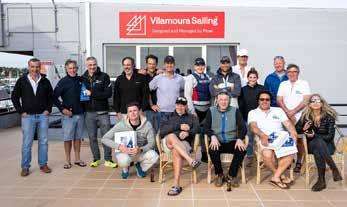

Andrzej Romanowski writes: The Polish Cup (Puchar Polski) 2024 series will consist of 10 regattas:
• Polish Finn Cup Regatta, Pieczyska, Koronowskie Lake 27-28.04.2024
• Polish Finn Cup Regatta, Goczałkowice, Goczałkowice Lake, 1112.05.2024
• Puchar PZŻ (Polish Yachting Association Cup), Krynica Morska, Vistula Lagoon, 22-23.05.2024
• Nord Cup, Gdańsk, Gdańsk Bay, 2223.06.2024
• Gdynia Sailing Days, Gdynia, Gdańsk Bay, 06-07.07.2024
• Fair Play Regatta, Szczecin, Dąbie Lake, 27-28.07.2024
• Puchar Yacht Club Rewa (Yacht Club Rewa Cup), Rewa, Puck Bay, 0304.07.2024
• Polish National Championship, Sopot, Gdańsk Bay, 16-18.08.2024
• Puchar Burmistrza Czaplinka (Mayor of Czaplinek Cup), Czaplinek, Drawsko Lake, 14-15.09.2024
• Season Closing Regatta, Zegrze, Zegrzyńskie Lake, 12-13.10.2024
The best six results of each participants will be counted. The Nord Cup and Polish National Championship will be counted for the IFA ranking. Setting dates for these regattas we managed to avoid date overlap with major IFA events. The Polish Finn Association (PSRKF) warmly invites friends from other countries to participate in our events. See our website http:// www.finnclass.pl/puchar-polski-2024/ for more details.


Torsten Jarnstam writes: Sweden’s 2024 season begins with the Pater Noster race for Finn, Sweden Cup no. 1 which is over the weekend of 4-5 May in Marstrand.
Sweden Cup no. 2 is sailed on Hönö/ Öckerö on 25-26 May.
The Open Swedish Championships, Sweden Cup no. 3 will be sailed in Råå outside Helsingborg Friday-Sunday 23-25 August.
The Sola Cup regatta in Karlstad, Sweden Cup no. 4 will be sailed 21-22 September and also includes the Sweden Cup final and Master’s Championship.
At the time of writing, the ice is quite thick in Karlstad, but in many other places in Sweden, for example in Malmö, people have started sailing Finn again after a rather cold winter. Now it probably won’t be long until spring is here and we in the rest of Sweden can also take out our Finns and start sailing.
In January 2024, Fredrik Tegnhed, Mikael Nilsson and Peter Overup participated in the training camp in Vilamoura in Portugal, which from what we can understand was very rewarding and good in many ways.
For the first time in many years, a Finn was displayed at this year’s Boat Show in Gothenburg from 3-11 February. It was the Finn sailors on Hönö who exhibited a Finn in West Coast Sailing Association’s stand and displayed Senior sailing at De Tio Öarnas Segelsällskap on Hönö. A few years ago, three enthusiastic 65+ started easy club sailing with the Finn. Today, the group has grown to about 15-16 Finns and the activities mean a lot – not only to the group’s members but to the whole club.


SAME DESIGN
NEW TECHNOLOGY
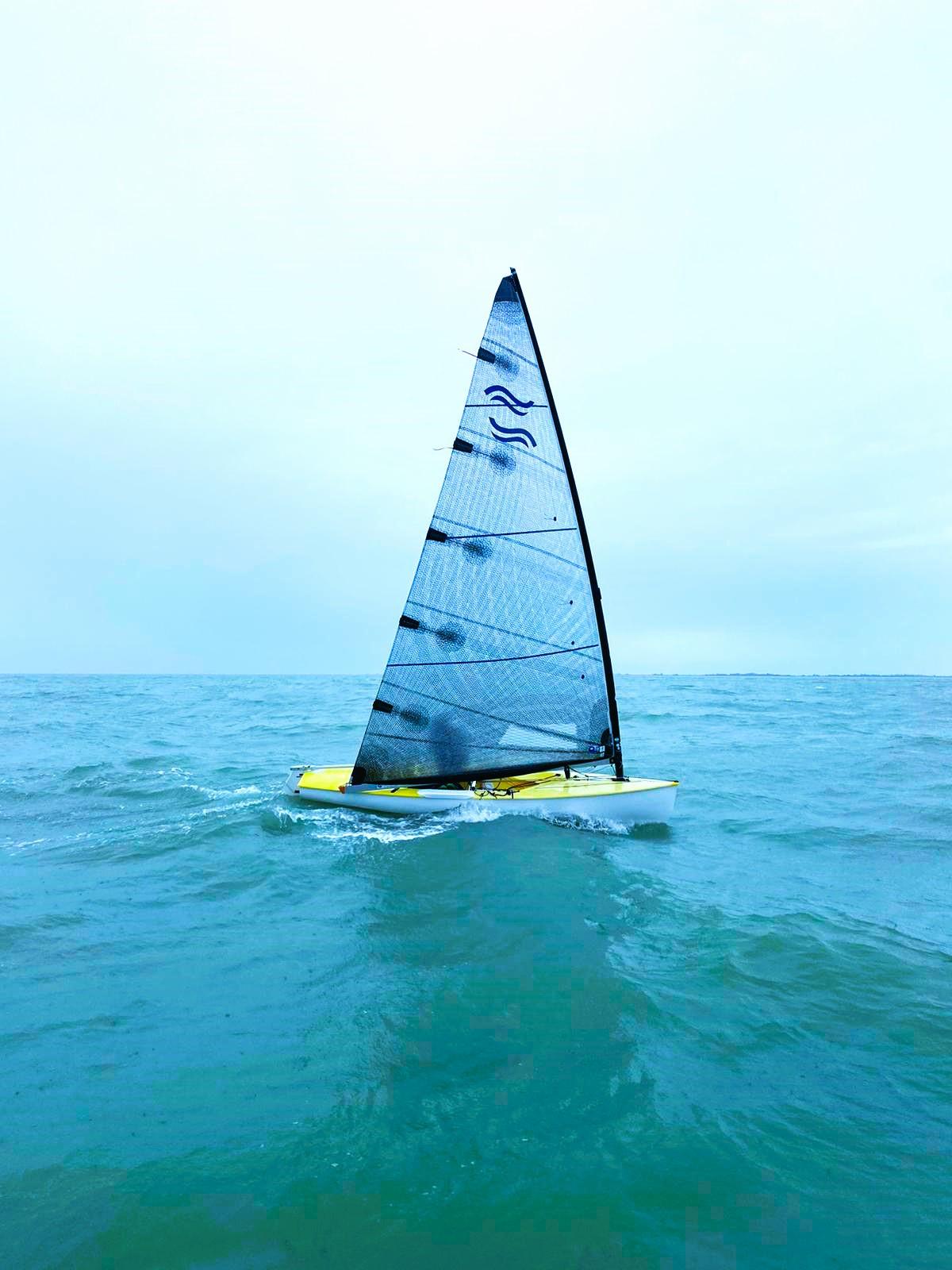
2023 ITALIAN CHAMPION
3° EUROPEAN CHAMPIONSHIP
olisails it | od@olisails it | +39 040232363

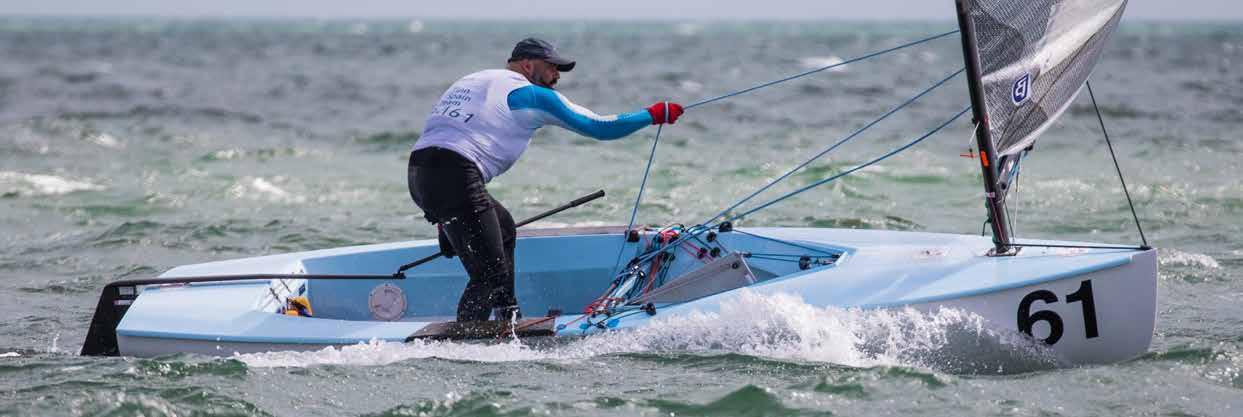

The World Tour for Finns takes in around 50 events across the world and all events are used to calculate the Finn World Ranking List. It includes all international events plus two more from each member country. If there are any omissions or changes please inform the IFA Office as soon as possible. Points are allocated based on the following event categories:
No details received from Chile, Norway or Spain. Check finnclass.org for latest updates.
The current World Ranking List in included in each issue and now includes some 1,331 sailors from 40 nations, which is about three quarters of all registered Finn sailors worldwide. 2024 Ranking Lists are expected to be released in March, July and November. Please send event details to office (at) finnclass.org and results to rankings (at) finnclass.org
For more details on points system see finnclass.org/ranking

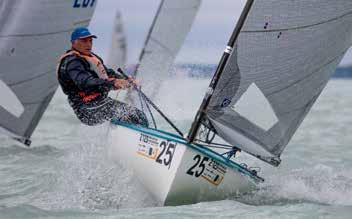


France’s Laurent Hay has increased his lead at the top of the March 2024 release of the Finn World Ranking to 200 points following the first regattas in 2024. Hay maintains the top place for the fifth time in a row. Despite 12 regattas from the World Tour for Finns being included, there is very little change at the top. The Finn World Ranking List now includes 1,331 sailors from 40 countries.

